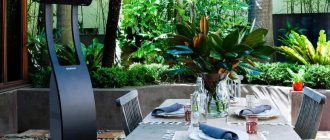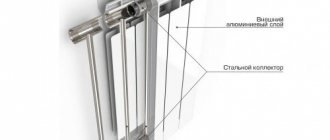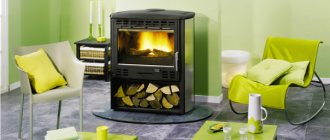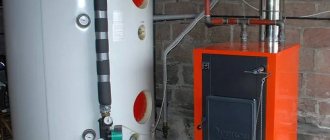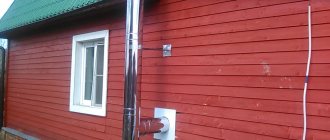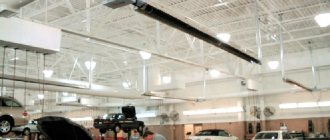Everyone knows the expression “warm the street.” This is what they say when precious heat leaves the house through windows and walls.
However, there is a whole class of devices that literally heat the street. At the same time, no one will call them wasteful and useless.
We are talking about outdoor dacha heaters that create a comfortable microclimate in a small area. With their help, you can relax in the fresh air in autumn and spring without the risk of catching a cold.
We will talk about what these devices are, how they work and what are the features of their choice in this article.
Heating the veranda: nuances
choice between an infrared heater for the veranda and a device of another type: IR radiation has long proven its effectiveness in heating open spaces. This means that it is worth looking for suitable equipment needed in this area. And although today the range of various heating devices is simply amazing, choosing an infrared heater for the veranda, buying it and then enjoying the warmth is not the easiest task. Therefore, you should approach the purchase of the optimal model wisely, having previously decided on the expectations from the equipment and its type.
IR heaters for open spaces come in two types: gas and electric. Each of them has its own disadvantages and advantages, so you should choose from the point of view of the future place of use:
Source
Top Pathfinder Hearth
- Characteristics Average price: 5227 rub.
- Country Russia
- Dimensions: 270*180*270 mm
- Weight: 1.8 kg
- Heated area: 15 m²
- Heating power: 1.5 kW
- Gas consumption: 0.11 kg/h
Pathfinder Hearth is a domestic creation, designed specifically for heating summer verandas and garages. This model perfectly combines an average price, good performance and economical fuel consumption. The ceramic gas burner is equipped with piezo ignition and mechanical control. Interestingly, it uses modern preheating technology. Thanks to this, the gas mixture quickly reaches the desired temperature, and there is no smoke emission due to incompletely burned fuel. You can put the heater into operation immediately. The main disadvantage is that at temperatures below -10°C the cylinder freezes and cannot be used. It may also fall out of the retainer.
Advantages and disadvantages
- Compact and light weight
- Preheating system
- Economical gas consumption
- Ceramic chamber
- The cylinder falls out of the magnetic holder
- Freezing below -10°C
- Mediocre build quality
What is the difference between outdoor infrared heaters and how to choose them
Many people, due to certain circumstances, have to spend a long time on the street, including in the winter. Clothes, vigorous activity, and hot drinks prevent you from freezing, but all this is not enough to feel comfortable. In such a situation, outdoor infrared heaters will help out. Let's find out what these devices are and why they are currently the best option for providing heating outside during the cold season.
What are outdoor infrared heaters?
An IR heater is a device that distributes heat into the environment through light radiation. It acts like the sun's rays, which heat not the air, but the earth. The thermal energy emanating from it ensures an increase in air temperature. Infrared heaters emit light only in a certain spectrum. Infrared radiation refers to electromagnetic waves with a wavelength from 0.74 to 2,000 microns. Infrared radiation falls between visible radiation, whose wavelength ranges from 380 to 750 nanometers, and submillimeter radiation.
Short-wave radiation is dangerous for humans, but long-wave radiation is not. Moreover, the shorter the wavelength, the less time you can stay under radiation without harming your health.
How are outdoor heaters different from regular ones?
Unlike infrared heaters intended for indoor use, outdoor heaters have a special design; in addition, they have an increased level of moisture insulation and impact resistance. There is always a risk of vandals, accidental falls and impacts, exposure to weather conditions and wildlife.
Their design features provide for targeted light exposure, which should cover a specific area, place, and be concentrated on it in order to minimize the intensity of energy dissipation in the environment. This is important for the reason that it is retained in the room by walls, floors, ceilings, windows, doors, and thermal insulation. On the street there is nothing to provide such deterrence. Therefore, the more heat gets to the right place, the stronger the effect and the less losses, energy consumption and payment for them.
This allows you to create a kind of “thermal umbrella” or area where the temperature will be 10-15 °C higher in contrast to the rest of the environment.
The protection class of these heaters is IPX5. Splashes are not dangerous for them, even if the devices are turned on, but any large dust and sand are dangerous.
Owner reviews: advantages and disadvantages
Even with some disadvantages, they are the most optimal option for providing outdoor heating of both people and objects and a certain area (for example, to prevent the formation of ice). All the pros and cons are listed in the table:
| Advantages | Flaws |
| They warm not the air, but objects and people, which allows the consumer to feel comfortable, for example, sitting on a chair with his hands on the table | After turning off the device, the temperature drops quickly |
| Quick heating of a specific area | Not always even heating |
| Economical consumption of energy resources (gas, electricity) | Increased brightness of light radiation, which can negatively affect the eyes (sunglasses will help mitigate the danger) |
| Convection air flows are not created, which increase the intensity of temperature reduction in the area of the heater | May pose a danger to children and animals if the heating element is not properly protected |
| Creating optimal conditions in a specific location | Increased risk of fire |
| Quiet operation. | |
| Possibility of heating areas where there are almost no objects, structures for protection from wind | |
| Long period of operation | |
| Environmental Safety | |
| Various mounting options |
Liquid fuel guns
A liquid fuel gun heats a garage.
Diesel heat generators are divided into direct and indirect heating devices.
The former, along with the heated air, also emit exhaust gases, so their scope of application is clearly limited - well-ventilated non-residential facilities. In everyday life - mainly for heating garages, workshops, outbuildings, etc. - guns of the second type are used. They are not so “fast” to warm up, but due to the closed combustion chamber (the air flow is heated from its outer walls) and the presence of a special pipe for connection to the smoke exhaust pipe, such units are safe for people staying in the room. At the same time, to replenish oxygen in the air, ventilation is still a necessary condition for their operation.
The devices are equipped with a timer, a flame control and stabilization system, and a shutdown mechanism for overheating.
Most of them have a built-in thermostat and allow the installation of an additional regulator for remote temperature control. There are models that have a fuel level sensor, protection against voltage surges, a digital display, and also allow you to change the angle of the nozzle to create a directed flow.
Diesel units are demanding on fuel quality. It must be “GOST” diesel fuel, without foreign impurities and contaminants, otherwise there is a risk of clogging the injectors and filter, carbon deposits on the spark plug, and even the threat of poisoning people with toxic emissions and an explosion
Direct heating diesel gun Neoclima NPD-15. Price 78,200 rub.
Diesel gun of indirect heating FRICO HDI22. Price 54,300 rub.
Direct heating diesel gun Kerona KFA-170T DGP. Price 30,600 rub.
The power of indirect heating guns is 20–85 kW, productivity is 500–3300 m³/h, the volume of the built-in tank is from 24 to 145 l, fuel consumption is 1.6–7.4 l/h. The fan consumes about 230–750 W, the noise level is 65–70 dB. Units weigh from 25 to 100 kg or more. Price range: 33–140 thousand rubles.
In addition to diesel ones, liquid fuel fan heaters include units that can “feed” on the majority of used technical oils (motor, transmission, hydraulic, rapeseed, etc.), as well as diesel fuel and kerosene.
There are also
multi-fuel heaters
designed for combinations of gas + diesel or oil products + solid fuel. All this is massive stationary equipment of direct or indirect heating, used in large industrial and warehouse facilities, in work areas and not intended for domestic use.
How to choose an outdoor infrared heater
When choosing a device, we advise you not to rely on the price of the device. As a rule, models with a low price tag have below average quality. Manufacturers of such heaters save on everything, including contact connections. Modern devices, especially those produced in countries such as the USA, Italy, Germany, have built-in systems for automatic shutdown in case of a fall, overheating, or interruption of the gas supply after the flame goes out. They are also equipped with tilt sensors.
A device with a removable reflector will provide protection from bad weather. If strong winds often blow in your region, it is better to give preference to a device with a base. In addition, the stability of the heater is important. Therefore, it is better to choose a device with a wide bottom, even sacrificing visual appeal.
Fuel used
To operate, outdoor infrared heaters can use:
But the most convenient and practical to use are those that operate on the first two energy sources. Electric heaters are the most popular for heating small areas. If you need to provide warmth and comfort over large areas, it is better to buy a gas-powered device.
Installation method
Infrared outdoor heaters can be installed:
There are devices resembling a mushroom, a floor lamp, a lamp post. Some can distribute radial energy over a certain area, others act pointwise, concentrating it on one object.
For open areas, floor options are optimal. For placement on terraces, near cafes, it is better to buy wall-mounted devices. In addition, there are special designs that are built into a table or bench. They are intended for installation in gazebos, verandas, and gardens. But you need to know that such devices have a fairly limited coverage area.
There are also stationary and mobile devices, they can be easily moved from place to place. In addition, if a temporary need arises, they provide the opportunity to increase the temperature in a place where a stationary device is already installed.
Minimum required power of an outdoor IR heater
It is quite difficult to accurately determine the minimum required power due to the fact that the devices will be installed outdoors. This causes intense heat exchange with the environment, the temperature in which can greatly increase and decrease not only with the change of season, but even during the day. For this reason, you need to focus on the peak minimum temperature that was recorded by weather forecasters in the region where you live.
To ensure optimal conditions, a person sitting at a table needs devices to be located on at least two sides, and preferably on four.
According to practice, to heat 1 sq. For a site surrounded by three walls, 300 W is sufficient. For a completely open place you will need from 750 to 1,000 W. It is clear that wind also has a cooling effect. Therefore, it is better to purchase a device with a fairly decent power reserve (40% or more) if the weather in your region is windy and it blows often.
Availability of moisture protection
Almost all outdoor heaters have a high level of moisture protection. There are models in which this figure is lower, and others in which it is higher. The latter, with IPX5 ratings and above, are designed for outdoor use, and can even be installed in bathrooms and shower rooms, where there is a high level of humidity and intense splashing of water droplets.
Top Ballu BOGH-15
The high price of the product is fully justified: the manufacturer used high-quality materials and provided maximum protection.
- Characteristics Average price: 47,990 rub.
- Country Russia
- Dimensions: 609*609*2410 mm
- Weight: 40 kg
- Heated area: 25 m²
- Heating power: 13 kW
- Gas consumption: 0.97 kg/h
This outdoor heater costs several times more than its analogues from the rating. Let's try to figure out why the manufacturer requires such a sum. Live fire is located inside a borosilicate glass flask. A 4-sided reflector protects the product from precipitation. The appearance of the device did not disappoint: the durable, floor-lamp-type case looks impressive and will fit into the interior of the restaurant terrace. The heating area here is not as impressive as that of the other Ballu model, but this will be enough for a summer veranda. For safety, there is a 45° tilt shut-off function, a solenoid valve and other sensors. The disadvantages of the product are obvious: huge weight and high price. Also, not everyone is satisfied with gas consumption.
Advantages and disadvantages
- Stylish and original design
- High-quality and reliable materials
- Multi-level fire protection
- Continuously adjustable fuel supply
- Increased gas consumption
- High cost and heavy weight
See also:
- 15 Best Gas Heaters
to the beginning of the rating
The best and most famous models: characteristics and prices
Ballu BIH-LW-1.2
Can be used in both open and closed spaces. It is an excellent choice for placement in semi-open spaces (for example, verandas, gazebos, outdoor cafes, garages, unfinished houses). Suitable for heating in frosty and windy weather. Mounted on the wall, installed using the special bracket included with the device. It has a light indication and a mechanical control system. It is relatively inexpensive - on average about 2,600 rubles.
Two operating modes allow you to maintain optimal temperature. The long cord makes it possible to connect the device even if it is located far from an electrical outlet. In terms of properties, quality and characteristics, it fully complies with the requirements of the European Union.
The only drawback is weak dust and no moisture protection, IP20 standard.
Neoclima SHAFT-2.0
It can also be installed on the floor, on a special stand. Easily moves from place to place. Has built-in overheating protection. It can be used as a main and additional heat source.
MO-EL Lucciola 797
It is a compact device. It has a very easy to use built-in control system. Universal to use. It can be used to heat indoor and outdoor areas, such as outdoor cafes, tents, balconies, verandas. Its features and advantages include:
The 4MO-EL Lucciola 797 heater can be easily installed not only on the floor or wall, but also suspended, for example, in a sun umbrella.
Ballu BIH-LM-1.5
Provides heating using two technologies - convection and radiant. Can be used both for outdoor heating and as a heat source inside the house. It also has increased efficiency due to its special design. It allows cold air flows to circulate at a fairly high speed through the body of the device: the place where the heating element is located. Thus, not only nearby objects are heated, but also the air.
Model Ballu BIH-LM-1.5 can be placed on the floor or hung on the wall thanks to the included removable supports and special brackets.
It has three operating modes - 500, 1,000 and 1,500 W. This allows you to adjust the temperature to the desired value, optimal in certain conditions. Works effectively both in cold weather and in windy conditions. Has a special handle for easy carrying. Equipped with a special protective grille that prevents accidental contact with the heating surface.
The heater has a long service life. The manufacturer gives it a 2-year warranty.
Hugett Floor Steel
Simple and easy to manage. A high-quality housing and a reliable, durable heating element ensure a long service life. It is easy to install on level ground. Capable of quickly heating outdoor tables and chairs located within a radius of about 4 m. Does not emit combustion products. Does not burn oxygen, dust or other small particles. Doesn't make noise when working.
The heater is characterized by economical use of electrical energy. Has protection against overheating and power surges. The design of the device allows you to change the heating angle without having to move the device. The only disadvantage is the extremely high cost.
Heliosa Scala 201FM
Can be used for heating indoor and outdoor areas: workshops, workshops, warehouses, workshops, rooms, halls. Suitable for local heating and heating of the entire room as additional and main heating.
Heliosa Scala 201FM is equipped with an open heating element, which ensures increased efficiency in operation. Its body is covered with enamel, which provides the metal with corrosion resistance. The reflector of the device is made of stainless material. Instantly switches to full power (2,000 W). It is an energy efficient device.
Equipped with a connection cable 5 meters long, which allows it to be used at a fairly large distance from the outlet. But it has a protection class from moisture and dust of only IP 20.
Top Aesto A-01
The device boasts the highest power, while fuel consumption is relatively economical due to special sensors.
- Characteristics Average price: 16,800 rub.
- Country: China
- Dimensions: 813*2200 mm
- Weight: 17 kg
- Heated area: 23 m²
- Heating power: 13 kW
- Gas consumption: 0.87 kg/h
Gas heaters from Aesto regularly appear in ratings of the best models for terraces and summer verandas. They look really impressive thanks to the mushroom-shaped body of the floor lamp type and the successful combination of colors. But it is not only the design of the device that attracts the attention of buyers. The body is made of stainless steel, the heating element is highly reliable. Propane or butane can be used as fuel. Gas consumption is quite economical; there is a special sensor for monitoring. Aesto A-01 is absolutely not suitable for enclosed spaces, but this is not required. The disadvantages include the fact that the actual heating area is unlikely to exceed 5–6 m².
Advantages and disadvantages
- The fuel tank lasts a long time
- Stylish body design
- Gas control sensor for safety
- Up to 30 hours of uninterrupted operation
- Increased heating area
- The first ignition takes about 5 minutes
- Not suitable for closed terraces
Prices: summary table
| Model | Heating element type | price, rub. | Power, W |
| Ballu BIH-LW-1.2 | Infrared quartz tube | 2 600 | 600, 1 200 |
| Neoclima SHAFT-2.0 | Quartz | 3 400 | 2 000 |
| MO-EL Lucciola 797 | Quartz | 12 800 | 1200 |
| Ballu BIH-LM-1.5 | Quartz | 4 000 | 500,1 000, 1 500 |
| Hugett Floor Steel | Carbon | 24 000 | 2 100 |
| Heliosa Scala 201FM | Quartz | 17 600 | 2 000 |
Outdoor infrared heaters allow you to create a comfort zone in an open, semi-open area; they are also suitable for heating rooms. The devices can provide local heating - only the place that is needed, thereby reducing heat costs. When buying a device, remember only one thing: short-wave devices are more effective on the street, but at the same time, a long stay in the area of their action is harmful to humans.
Source
Top Ballu BIGH-55
This gas heater is the only device in the rating that is capable of heating a terrace or room of up to 60 m².
- Characteristics Average price: 12890 rub.
- Country Russia
- Dimensions: 370*398*750 mm
- Weight: 10.9 kg
- Heated area: 60 m²
- Heating power: 4.2 kW
- Gas consumption: 0.11–0.31 kg/h
Ballu BIGH-55 is a powerful gas stove for heating a large room, summer veranda or terrace. This is the best option for a home where there are frequent power outages. The device combines infrared and convective principles. The latest Fast Heat technology has increased heat transfer. The front part is made of strong ceramics, so there is no doubt about the reliability and durability of the device. Manufacturers also paid special attention to safety. There is a set of sensors to turn off when tipping over and control the size of the fire. As for the cons, users found only the lack of forced convection. Because of this, work efficiency decreases.
Advantages and disadvantages
- Sophisticated security system
- Works autonomously and on electricity
- Improved heat dissipation
- Heating of an area up to 60 square meters
- No forced convection system
- Sometimes gas consumption exceeds the stated norm

